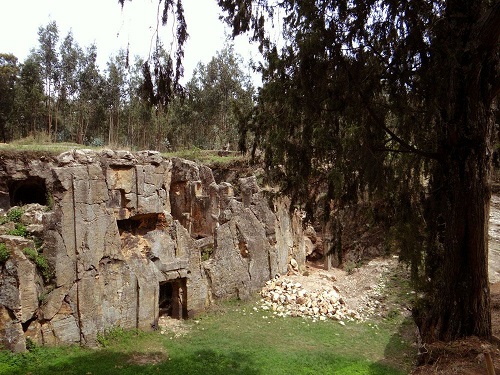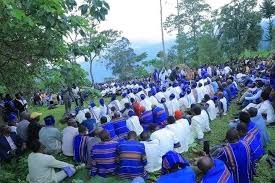
COMPILED BY STAFF REPORTER
Can’t get to Lalibela, but a want to see a Rock Hewn Church near Addis Ababa? Washa Mikael, commented a visitor from Kansas City, United States, two years ago.
The Washa Mikael, literally ‘The Cave of Michael’, is one of the rock hewn churches located at Yeka hill, in the Yeka Sub-City, southeast of the Addis Ababa.
Historians and the Ethiopian Orthodox Church date it back as far as the 4thcentury AD pointing to its resemblance to Aksumite era, churches in other regions of Ethiopia and to the Sabaen artifacts found at the site of the church.
This is a semi-monolithic church of the country and it is made entirely from stone – like Lalibela it was carved from one piece of rock – in this case basalt.
Washa Mikael Church is excavated from one huge solid rock and was constructed in the Shoan architectural style with some influences from the Aksumite style. Similar to some of the churches of Lalibela, Washa Mikael is a rock-hewn semi-monolithic church.
The
church was made by the two Ethiopian kings whose name were Ezana and Sayzana
and later renamed ABRAHA and ATSB’HA about 320A.D. Ethiopian Kings apparently
get three names: the baptism name, their original name and their “king” name.
They further explain that structures in and around the church show that the area was once used as a training ground for the horsemen of the Aksumite armies of King Ezanan, arguing that the area was one of the territory held by the vast Kingdom of Aksum. It is a popular tourist destination.
As written documents stated, the church suffered damages during the heavy bombing campaigns of the Italians during the second Italo-Ethiopian War.
From birds’ eye view, the church is the shape of the letter “U” – which is read as “Ha” in the Amharic alphabet. Apparently this “U” represents the phrase “Halwotuleabemkdmealem”, which means “Before anything existed, God was here”
In the 19th century, Emperor Menelik II rediscovered the structure after it was initially abandoned during the Abyssinian-Adel war. He had the Tabot of St. Michael moved from inside the church to a church he had build lower down the mountain called Yeka Mikael. He subsequently made attempts at restoring and preserving the structures of the church.
The church suffered damages during the heavy bombing campaigns of the Italians during the second Italo-Ethiopian War.
From birds’ eye view, the church is the shape of ‘U’ which is read as ‘Ha’ in the Amharic alphabet. Apparently this shape was meant to signify the Ge’ez phrase starting with the same letter, “ሀልዎቱለኣብእምቅድመዐለም” (Halwotuleabemkdmealem) which means “Before anything existed, God was here”.
While getting to the church you get to see beautiful green trees, athletes, and you will also get a chance to hike for couple of hours to get to the hill where the cave church is located
The church originally stood seven meters tall, had seven windows (some still partially remain) to represent 7 days, seven skies/heavens and seven angles. Entrance in to the church is through a tunnel which passes underground.
Once inside, you can visit the priests’ room, the baptism room and the main alter- or what remains of each of these. The baptism room has a window- the mother would stand outside and pass the baby through as only the priest was allowed inside.
The peaceful ambience surrounding the place is really attractive and you will surely like the place.
The church is being similar to the churches at Lalibela or Tigray in the north, it is definitely worth a peek as an example of the extraordinary rock-hewn architecture that Ethiopia is so famous for.
I did a very nice and refreshing tour to Washa Mickael Church while staying in Addis Abeba.The church is precursor and experimental to the Lalibela churches and is interesting to visit if you want to know the amazing Ethiopian rock churches better. Being older, the church is not in as good condition like the Lalibela ones but it has much charm. The pleasant and smelly walk among the eucaliptus trees to reach the church adds interest to the visit, commented a visitor who came from Brussels, Belgium.
The church still gets devotion (I saw burned candles) and there is a painting of the very interesting Saint Teklehaimanot.
I did a nice encounter when visiting the church when meeting an hermit nun living there in a cove. I was really amazed, he remarked.
The Ethiopian Herald April 24/2021




